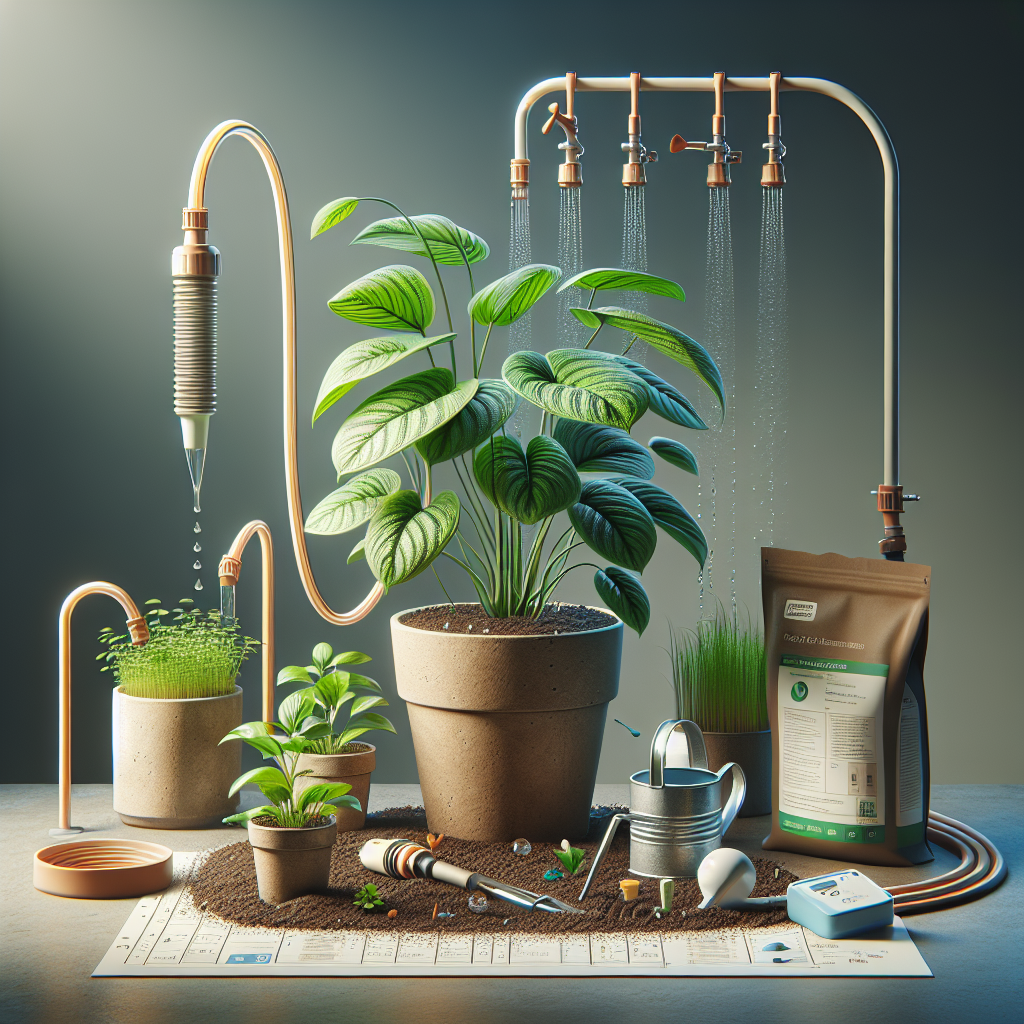Indoor plants require regular watering to thrive and stay healthy. However, it can be challenging to ensure that they receive the right amount of water without overwatering or underwatering them. One effective solution to this problem is to use slow drip systems for indoor plants.
Slow drip systems are an efficient way to provide consistent moisture to your indoor plants without the risk of overwatering. These systems deliver water directly to the roots of the plants at a slow and steady pace, allowing them to absorb the water gradually and prevent water from pooling on the surface of the soil.
There are several benefits to using slow drip systems for indoor plants. Firstly, they help conserve water by delivering it directly to the roots where it is needed most, rather than allowing it to evaporate or run off onto the floor. This can save you time and money on watering your plants while also promoting healthier growth.
Additionally, slow drip systems can help prevent root rot by ensuring that excess water drains away properly. Overwatering is a common problem with indoor plants, as their roots can become waterlogged if they are not allowed to dry out between watering sessions. Slow drip systems provide just enough moisture for the plants to thrive while preventing water from accumulating in the soil and causing root rot.
When choosing a slow drip system for your indoor plants, there are several options available. One popular choice is a self-watering pot that features a reservoir at the bottom of the container. The plant’s roots can draw up water from this reservoir as needed, ensuring that they receive a constant supply of moisture.
Another option is a drip irrigation system that delivers water directly to the roots through small tubes or emitters. These systems can be customized based on the specific needs of your plants, allowing you to adjust the flow rate and frequency of watering as required.
To set up a slow drip system for your indoor plants, start by selecting an appropriate container or pot with good drainage holes at the bottom. Place a layer of gravel or pebbles in the bottom of the pot to improve drainage and prevent soil from clogging up the holes.
Next, fill the pot with a high-quality potting mix that is lightweight and well-draining. Water thoroughly until excess moisture drains out of the bottom of the pot before planting your indoor plant.
Once your plant is in place, you can set up your slow drip system by adding a watering stake or spike into the soil near its roots. This stake will deliver water directly to the plant’s root zone, ensuring that it receives just enough moisture without becoming waterlogged.
Alternatively, you can connect small tubing or emitters to a central reservoir or water source and place them strategically around your plant’s base. This will allow you to control how much water each plant receives while maintaining proper hydration levels throughout your indoor garden.
Remember to monitor your slow drip system regularly to ensure that it is working correctly and adjust as needed based on environmental conditions such as temperature and humidity levels. You may need to increase or decrease watering frequency depending on factors such as seasonality and growth rates.
In conclusion, using slow drip systems for indoor plants is an effective way to provide consistent moisture while preventing overwatering and root rot. By investing in a quality system tailored to your specific needs, you can enjoy healthy, thriving houseplants year-round with minimal effort required on your part. So why not give this innovative watering solution a try for yourself? Your indoor garden will thank you for it!













